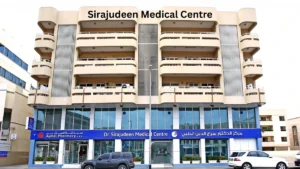Osteoporosis is a silent condition that weakens bones over time, making them fragile and more susceptible to fractures. Affecting millions worldwide—especially postmenopausal women and older adults—this condition often remains unnoticed until a bone breaks. Fortunately, with early detection and the right osteoporosis treatment, bone loss can be slowed, fractures can be prevented, and quality of life can be improved.
| Category | Details |
|---|---|
| Primary Goals | Prevent fractures, increase bone density, reduce bone loss, improve mobility |
| Key Nutrients | Calcium, Vitamin D, Magnesium, Phosphorus |
| Best Foods | Dairy products, leafy greens, salmon, tofu, almonds, fortified cereals |
| Effective Exercises | Weight-bearing (walking, jogging), strength training (weights), balance (tai chi, yoga) |
| Lifestyle Changes | Quit smoking, limit alcohol, fall-proof home, maintain healthy body weight |
| Common Medications | Bisphosphonates, SERMs, Parathyroid hormone analogs, RANKL inhibitors, Hormone therapy |
| Alternative Therapies | Calcium/Vitamin D supplements, acupuncture, herbal support (under supervision) |
| Surgical Treatments | Vertebroplasty, Kyphoplasty, Joint replacement (in severe fracture cases) |
| Risk Factors | Aging, menopause, inactivity, poor diet, smoking, family history |
| Bone Density Test | DEXA scan (Dual-Energy X-ray Absorptiometry) |
| Regular Monitoring | Every 1–2 years, or as advised by healthcare provider |
| Future Innovations | Gut microbiota therapy, AI-based screening, Biologic drugs, Gene therapies |
Understanding Osteoporosis
Osteoporosis is a chronic bone disease characterized by low bone mass and deterioration of bone tissue. Common risk factors include:
- Aging (especially over 50)
- Hormonal changes (like menopause)
- Sedentary lifestyle
- Smoking and alcohol use
- Low calcium and vitamin D intake
- Family history of osteoporosis
Diagnosing osteoporosis typically involves a bone mineral density (BMD) test, often performed using a DEXA scan. The earlier the diagnosis, the better the outcome of treatment.
Goals of Osteoporosis Treatment
Effective osteoporosis treatment focuses on:
- Preventing fractures in vulnerable bones like the hips, spine, and wrists
- Increasing bone density
- Reducing bone loss
- Improving mobility and reducing pain
- Maintaining independence and quality of life
Read more: Epidural Injection Price in UAE: What Expecting Mothers Should Know in 2025
Lifestyle Changes for Managing Osteoporosis
Diet
Nutrition plays a vital role in maintaining bone health. Include:
- Calcium-rich foods: dairy, leafy greens, tofu, almonds
- Vitamin D: salmon, egg yolks, fortified foods, and sunlight exposure
- Magnesium and phosphorus for bone structure support
Avoid excessive salt, caffeine, and soda, as they may weaken bones.
Exercise
Physical activity is key in osteoporosis treatment. Focus on:
- Weight-bearing exercises: walking, hiking, and dancing
- Strength training: lifting weights to stimulate bone growth
- Balance exercises: tai chi and yoga to prevent falls
Read more: Life Insurance Corporation (LIC): A Comprehensive Guide to India’s Largest Insurer
Lifestyle Habits
- Quit smoking: tobacco weakens bones
- Limit alcohol: excessive intake reduces calcium absorption
- Fall-proof your home: install handrails, clear clutter, and use non-slip mats
Medications for Osteoporosis
When lifestyle changes aren’t enough, medications can help.
Bisphosphonates
- Most common drugs (e.g., alendronate, risedronate, zoledronic acid)
- Slow bone loss and reduce fracture risk
Hormonal Therapy
- SERMs (Selective Estrogen Receptor Modulators): mimic estrogen’s effects (e.g., raloxifene)
- Estrogen replacement therapy for postmenopausal women
- Testosterone therapy for men with low hormone levels
Bone-Building Medications
- Parathyroid hormone analogs like teriparatide and abaloparatide
- Stimulate bone growth in high-risk cases
RANK Ligand Inhibitors
- Denosumab: blocks bone-resorbing cells, useful in severe osteoporosis
Alternative and Complementary Therapies
Some patients explore natural approaches:
- Calcium and Vitamin D supplements
- Herbal remedies (consult your doctor first)
- Acupuncture for pain management
Note: Alternative methods should not replace conventional osteoporosis treatment.
Surgical Options
In severe cases involving fractures:
- Vertebroplasty or kyphoplasty to stabilize spinal fractures
- Hip or joint replacement surgery for major breaks
Surgery is often followed by rehab and long-term osteoporosis management.
Emerging Treatments and Research
Innovative research is shaping the future of osteoporosis care:
- Gut microbiota’s role in bone metabolism
- AI-powered bone density screening tools
- Biologic drugs and gene therapies targeting bone regeneration
Living with Osteoporosis
Managing osteoporosis is a lifelong journey. Here are some tips:
- Stick to your treatment plan
- Monitor bone health regularly
- Join support groups for emotional encouragement
- Maintain an active, healthy lifestyle
Conclusion
Osteoporosis treatment is not a one-size-fits-all approach. With the right mix of medications, exercise, and diet—and by eliminating harmful habits—you can reduce the risk of fractures and live a full, active life. Early diagnosis and consultation with a healthcare provider are crucial steps in protecting your bone health.
FAQs About Osteoporosis Treatment
Q1. What is the best exercise for osteoporosis?
A: Weight-bearing exercises like walking and dancing, combined with strength training and balance exercises.
Q2. Can osteoporosis be reversed?
A: While it can’t be fully reversed, bone loss can be significantly slowed and even partially rebuilt with proper treatment.
Q3. How long does osteoporosis treatment last?
A: Most treatments are long-term and may continue for years depending on your bone health and fracture risk.





